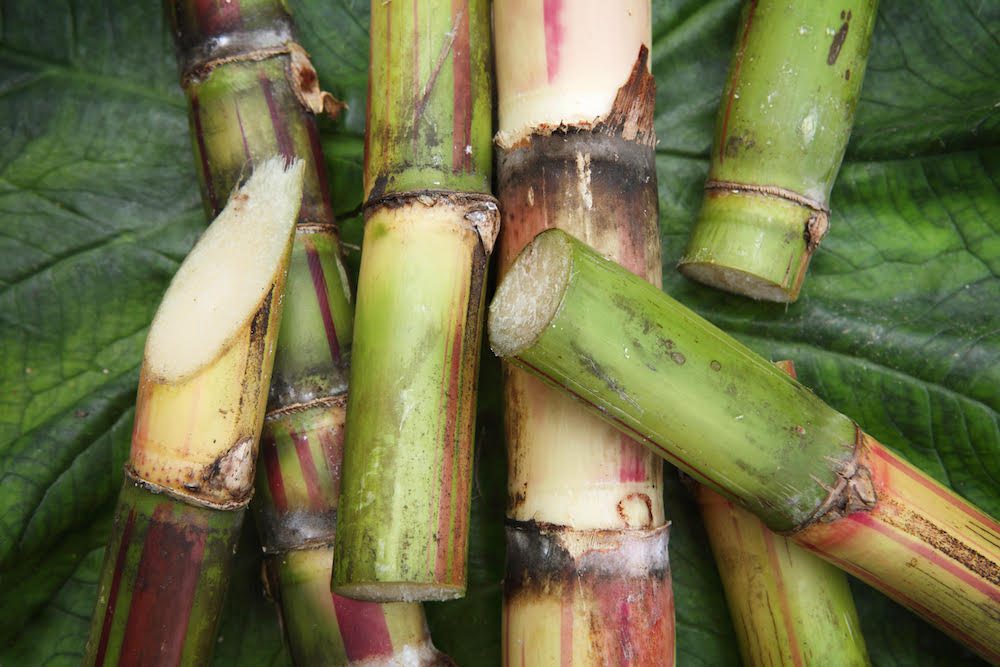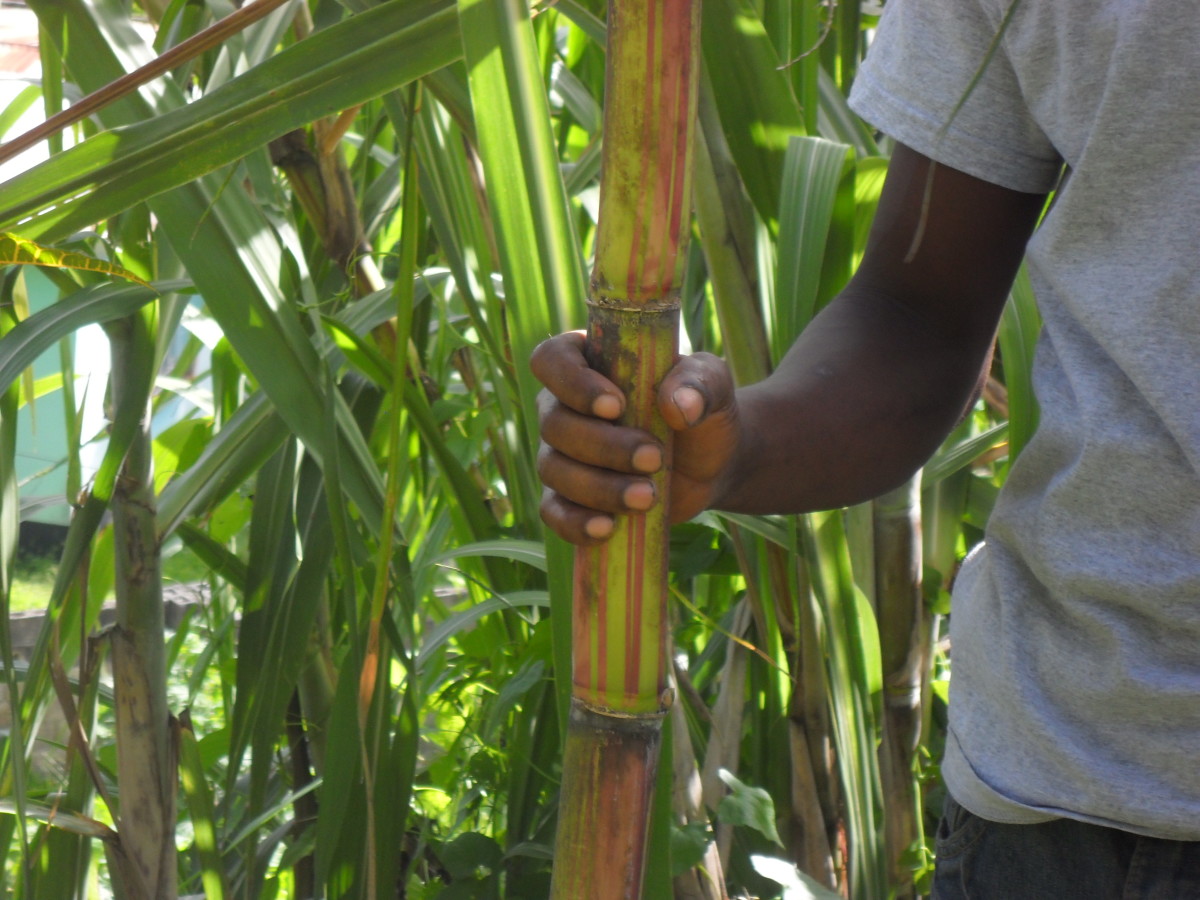What Are Sugar Canes Used For Besides Sugar? Discover the Hidden Uses
Revealing the Value of Sugar Canes: What Are Sugar Canes Utilized For in the Walking Cane Sugar Sector?
Sugar walking canes work as the cornerstone of the walking stick sugar industry, primarily supplying the raw material needed for sugar production. Their capacity to convert sunlight into sucrose with photosynthesis is crucial. Beyond their sweetening buildings, sugar walking canes locate utility in numerous culinary applications and emerging industries. However, the complete extent of their effect extends past the kitchen. This conversation will certainly check out the complex duties of sugar walking sticks in both market and economic climate.
The Role of Sugar Canes in Sugar Production
Sugar walking canes offer as the fundamental raw product in the cane sugar industry, playing a crucial role in the production process. These high, seasonal yards prosper in exotic and subtropical environments, where they absorb sunlight and nutrients to produce sucrose. The harvesting of sugar walking canes typically occurs when the plants get to maturity, maximizing their sugar content.Once collected, the canes go through squashing to remove the juice, which has dissolved sugars. This juice is after that clarified and focused via dissipation, transforming it right into a syrup. Ultimately, condensation occurs, permitting the separation of sugar crystals from the continuing to be syrup.The extracted sugar undertakes further refining to accomplish the preferred pureness and top quality - What Are Sugar Canes Used For. As a result, the entire process highlights the crucial contribution of sugar walking sticks to sugar manufacturing, highlighting their value as both a basic material and a driver in the manufacturing of walking cane sugar

Diverse Applications in Food and Drink Industry
In the food and drink industry, sugar walking cane serves multiple important functions. It acts not just as a main sugar in various products but also as a flavoring representative that boosts preference accounts. Furthermore, its elements play a substantial role in fermentation and purification procedures, adding to the manufacturing of alcohols.
Sweetener in Products

The versatility of walking cane sugar as a sweetener makes it a staple in a wide range of food and beverage items. Widely made use of in baked items, it enhances the preference and structure of cakes, cookies, and pastries by giving dampness and promoting browning during baking. In beverages, cane sugar is a preferred choice for sweetening juices, soft drinks, and teas, permitting a balanced taste profile. Additionally, it offers as a crucial active ingredient in marinades, sauces, and dressings, contributing to an unified mix of flavors. Walking stick sugar's capacity to dissolve quickly and its consistent sweetness profile further strengthen its duty as a favored sweetener - What Are Sugar Canes Used For. On the whole, its diverse applications emphasize the important duty of walking stick sugar in the cooking landscape
Flavoring Agent Usage
Making use of walking stick sugar as a flavor agent expands past its role as a mere sweetener, enriching a variety of cooking productions. In the food and beverage industry, it improves taste profiles by stabilizing level of acidity and bitterness, making it a vital part in dressings, sauces, and sauces. Additionally, walking stick sugar adds to the overall mouthfeel, providing a pleasant appearance in baked products and confections. Its caramelization during food preparation adds deepness to both savory and sweet recipes, while likewise acting as a chemical in jellies and jams. Moreover, in beverages, walking stick sugar is employed to magnify flavors in cocktails and sodas, ensuring a much more pleasurable alcohol consumption experience. This flexibility underscores its importance in varied cooking applications.
Fermentation and Purification
Walking stick sugar plays a substantial role in fermentation and distillation procedures, which are essential in creating a variety of alcoholic drinks and foodstuff. Throughout fermentation, yeast converts sugars into alcohol and carbon dioxide, an essential action in crafting beverages like rum and vodka. Purification better cleanses these alcoholic blends, concentrating flavors and increasing alcohol material. Past beverages, walking cane sugar is also integral in creating vinegar and specific artificial additive via fermentation. The adaptability of walking cane sugar boosts the taste accounts and quality of these products, making it important in the food and drink market. Its payment not just sustains standard techniques however also promotes advancement in crafting new flavors and experiences for consumers.
Sugar Canes in Biofuel Production
As passion in eco-friendly energy resources grows, sugar canes are progressively identified for their possibility in biofuel production. The biomass obtained from sugar canes can be transformed right into ethanol, a sustainable gas alternative that minimizes greenhouse gas discharges contrasted to nonrenewable fuel sources. This process commonly includes fermenting the sugar removed from the cane, which is after that distilled to generate high-purity ethanol appropriate for use in vehicles.Additionally, sugar walking cane bagasse, the fibrous residue left after juice removal, can be used as a feedstock for bioenergy. It can be burned to produce steam and power, adding to energy self-sufficiency in sugar mills. Countries such as Brazil have actually efficiently incorporated sugar walking stick biofuel into their energy policies, resulting in reduced reliance on imported gas - What Are Sugar Canes Used For. Generally, sugar walking sticks stand for a promising method for biofuel manufacturing, straightening agricultural practices with environmental sustainability objectives
Industrial Uses of Sugar Canes
While often identified largely for sugar manufacturing, sugar walking sticks likewise have varied commercial applications that expand well beyond the food sector. The fibrous byproducts of sugar walking cane, referred to as bagasse, work as a useful source in different industries. Bagasse is generally made use of as a biofuel, generating power in sugar mills and other facilities. Furthermore, it can be processed into paper, cardboard, and naturally degradable materials, advertising sustainable practices.In enhancement, sugar canes add to the manufacturing of molasses, a result used in the fermentation process for producing alcohol and yeast. This convenience makes sugar walking sticks important to the drink and pharmaceutical markets. Sugar walking cane essences are employed in the cosmetics industry, offering natural components for skincare and beauty items. Generally, the industrial uses of sugar walking canes highlight their significance past sugar, showcasing their duty in advertising sustainability and sustaining numerous fields.
Economic Impact of Sugar Cane Growing
The economic effect of sugar cane cultivation is substantial, mostly through job production and export profits generation. This sector not only provides job opportunity in country locations yet likewise contributes substantially to nationwide economies using exports. Understanding these aspects highlights the important role sugar walking cane plays in both regional and international markets.
Work Development Opportunities
Although frequently overlooked, the sugar cane industry plays a necessary duty in work production, substantially influencing regional economic situations. The cultivation, harvesting, and processing of sugar walking cane produce countless job opportunity, from area employees to manufacturing facility personnel. In many areas, these work give livelihoods for thousands of family members, contributing to neighborhood stability and growth. Furthermore, ancillary industries such as transport, devices production, and retail advantage from the sugar walking cane sector, further increasing employment alternatives. Seasonal work throughout planting and harvest likewise supports short-term positions, allowing employees to gain revenue in otherwise lean durations. On the whole, the sugar walking stick industry offers as a crucial financial engine, fostering job production and improving the quality of life for several people and communities.
Export Earnings Generation

Lasting Practices in Sugar Walking Cane Farming
While standard sugar walking stick farming practices have actually commonly led to ecological degradation, an expanding number of farmers are taking on sustainable techniques that prioritize environmental balance. These techniques consist of crop turning, which enhances dirt fertility and decreases parasite outbreaks, and the usage of organic plant foods to decrease chemical drainage. continue reading this Additionally, some farmers are applying incorporated parasite administration methods, which concentrate on making use of all-natural predators and biopesticides rather than damaging chemicals.Water preservation methods, such as drip watering, are additionally acquiring traction, enabling reliable water usage while maintaining plant wellness. Additionally, many farmers are spending in renewable resource resources, such as biomass from sugar walking cane waste, to power operations and decrease their carbon footprint. These sustainable methods not just shield ecosystems yet likewise boost the long-lasting stability of sugar walking cane farming, guaranteeing that it can proceed to meet international sugar demands while minimizing ecological influence.
Regularly Asked Questions
How Are Sugar Canes Harvested and Processed?
Sugar walking canes are gathered making use of hand-operated methods or mechanical cutters, then transferred to manufacturing facilities. There, they undergo cleaning, squashing, and extraction processes to get juice, which is then cleared up, vaporized, and taken shape right into sugar.
What Is the Nutritional Worth of Sugar Cane?
The dietary worth of sugar cane includes carbs, primarily in the type of sucrose, along with trace quantities of minerals and vitamins like calcium and potassium. Nevertheless, it is low in healthy protein and fat material on the whole.
Can Sugar Walking Cane Be Grown in Non-Tropical Areas?
Sugar walking cane can be expanded in non-tropical regions, however it calls for details conditions such as adequate heat, moisture, and ideal soil. Adjustment and cultivation practices are essential for successful growth outside traditional tropical climates.

What Conditions and pests Influence Sugar Walking Stick Crops?
Diseases and pests markedly impact sugar cane crops. Common hazards consist of the sugarcane borer, red rot, and mosaic virus, which can decrease return and high quality, requiring effective monitoring methods to secure these vital agricultural resources.
How Does Sugar Walking Cane Farming Effect Citizen Communities?
Sugar walking cane farming substantially impacts neighborhood neighborhoods by supplying employment possibility, promoting financial development, and supporting local businesses. It can also lead to social difficulties and ecological concerns, impacting community health and sustainability. Sugar canes serve as the foundation of the cane sugar sector, largely providing the raw product needed for sugar manufacturing. Sugar canes offer as the fundamental raw product in the walking cane sugar industry, playing a critical function in the manufacturing process. index The harvesting of sugar walking canes normally happens when the plants reach maturity, maximizing their sugar content.Once harvested, the walking sticks undergo squashing to remove the juice, which has dissolved sugars. While commonly recognized mainly for sugar manufacturing, sugar walking canes likewise have diverse commercial applications that expand well beyond the food field. As international need for sugar continues to increase, countries abundant in sugar cane resources take advantage of on this possibility, exporting raw sugar and refined items to worldwide markets.